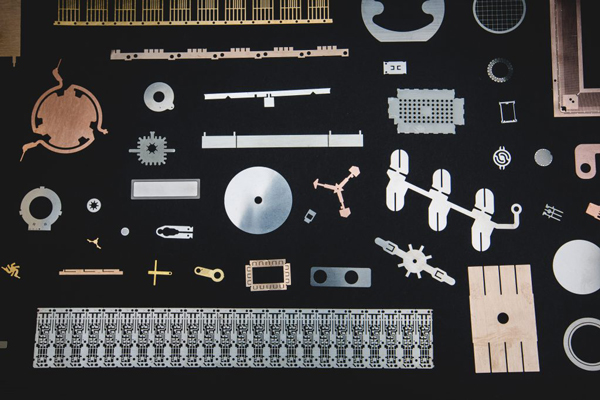
Wet etching, as an important microfabrication technology, has a wide range of applications in semiconductor manufacturing, microelectronic device production and other fields. It realizes the exfoliation of the material through the chemical reaction between the chemical etching solution and the etched material, thus completing the transfer of the pattern. However, although wet etching plays an important role in industrial applications, it also has some drawbacks that cannot be ignored. In this article, we will discuss the disadvantages of wet etching in detail in order to have a more comprehensive understanding of it.
First, the resolution of wet etching is relatively low. Since the chemical reaction between the etchant and the etched material is isotropic during wet etching, this means that the etching process is not easy to control precisely. As a result, when etching fine structures, wet etching is often difficult to achieve the desired fidelity, and the minimum line width of the etched pattern is difficult to control precisely. This limits the use of wet etching in applications that require high-precision pattern transfer.
Second, air bubbles may be generated during wet etching, affecting the uniformity and integrity of the etch. When the etchant is in contact with the wafer surface, bubbles may be generated due to surface tension, temperature, and other factors. These bubbles can prevent the etchant from fully contacting the wafer surface, resulting in uneven etching or even incomplete etching. This not only affects the performance and quality of the product, but may also increase production costs and process complexity.
In addition, the chemicals used in the wet etching process may cause some harm to the human body and the environment. These chemicals are usually characterized by irritation and corrosiveness, and improper operation may lead to injuries. At the same time, the discharge and disposal of chemicals may also cause pollution to the environment. Therefore, when using wet etching technology, it is necessary to strictly comply with the safety operating procedures to ensure the safety of personnel and the protection of the environment.
Furthermore, wet etching has a limited range of applicable materials. Although wet etching is applicable to almost all metals, glass, plastics and other materials, for some specific materials, such as certain alloys or compounds, wet etching may not achieve the expected results. This limits the application of wet etching to a wider range of applications.
In addition, the maintenance and upkeep of wet etching equipment can be a challenge. Etching solutions are gradually consumed and deteriorate during use, and need to be replaced and replenished regularly. At the same time, equipment cleaning and maintenance are essential to ensure the stability and reliability of the etching process. However, these tasks often require specialized technicians, increasing operating costs and human resource investment.
Finally, the productivity of wet etching is relatively low. Since the wet etching process needs to wait for the chemical reaction to take place, the production cycle is long. At the same time, the production efficiency is difficult to control accurately because the reaction rate between the etching solution and the etched material is affected by a variety of factors, such as temperature, concentration, and stirring speed. This may lead to unstable production capacity of the production line, affecting the productivity and market competitiveness of the enterprise.
In summary, although wet etching has a wide range of applications, it also has some obvious disadvantages. These drawbacks limit the application of wet etching in higher precision and wider fields. Therefore, when researching and developing new microfabrication technologies, it is necessary to fully consider the limitations of wet etching and seek effective solutions to overcome these drawbacks. At the same time, when using wet etching technology, it is also necessary to reasonably select the process parameters and operating conditions according to the specific application needs and process requirements, in order to ensure product performance and quality.
Contact: andy_Lai
Phone: 18938693450
E-mail: yw9@zldsmt.com
Add: Building A3, Huafa Industrial Park, Fuyong Town, Fuyuan Road, Fuyong Town, Baoan District, Shenzhen,China